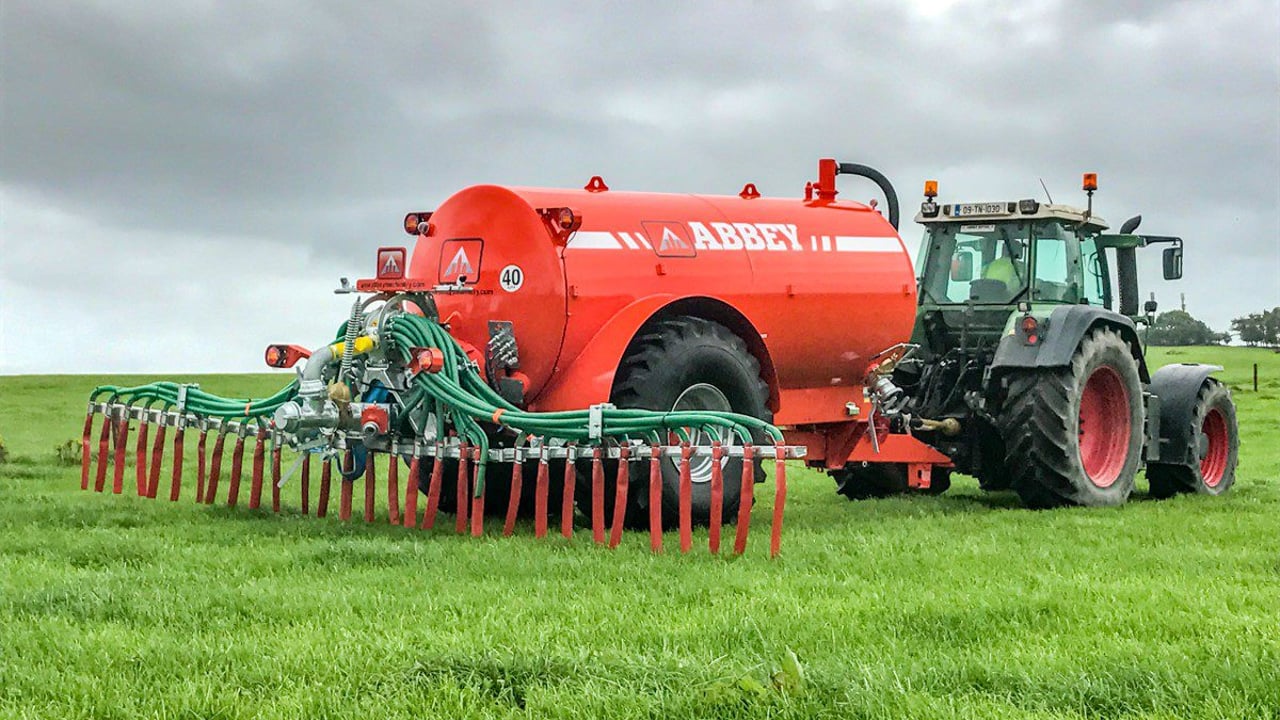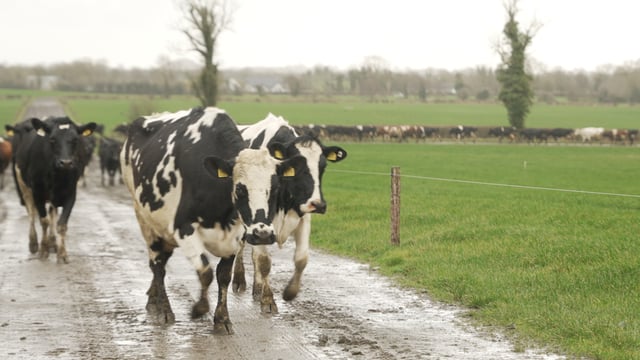How to ensure the best use of your slurry this spring
A lot of slurry may have already been spread when the spreading period opened in January, however, with conditions now much improved, farmers have the opportunity to get the tanker back out spreading.
With drier conditions over the last week and forecast for the next few days, it may allow for the tractor and tanker to travel the ground without damage while spreading nutrients in more favourable soil temperatures and conditions.
In order to get the best out of your slurry and the nutrients it curtails, nitrogen (N), phosphorus (P), and potassium (K) should be spread in the right conditions at the right rate.
It's also important to know what you are spreading and how much nutrients your ground is receiving, so that it can be input into your nutrient plan, and if needed, topped up with chemical N in a few weeks time.
At the moment, slurry can be estimated to be worth around €30-€35 per 1,000/gal, if you take account of the N, P, and K included, according to Teagasc.
The value of slurry should not be underestimated, with around 80% of its nutrient value being in the form of P and K, which could prove crucial for farms restricted in regard to P applications.
A Teagasc survey testing slurry across a range of farms produced an average value of nine units of N, five units of P and 32 units of K contained within 1,000gal of cattle slurry.
However, there can be huge variation in the nutritive content of cattle slurry from one farm to the next, or even from one tank on the farm to the next.
Follow these instructions to take a slurry sample:
- Agitate the slurry tank;
- Suck up a load of slurry into the tanker;
- Take the sample from the fill point of the slurry tanker;
- Place the sample in a sealed plastic container.
To test the slurry yourself, a hydrometer can be used to get a rough estimate of the value of your slurry, or for more accurate results, your sample can be sent to a lab.
When using a hydrometer, you will be fed back a percentage indicating the density of the liquid and the following table can be used as guide for the value of your slurry:
| Slurry dry matter % | N Units/1,000 gallons | P Units/1,000 gallons | K Units/1,000 gallons | € Value/1,000 gallons |
|---|---|---|---|---|
| 2% (very diluted) | 4 | 2 | 13 | 16 |
| 4% (watery) | 6 | 3 | 21 | 25 |
| 6% (typical) | 9 | 5 | 32 | 39 |
| 7% (thicker) | 10 | 6 | 36 | 45 |
Slurry storage is a huge issue on farms across the country as, post-milk quota, cow numbers increased dramatically but slurry capacity has been overlooked.
Now to keep within regulation and to reap the benefits of slurry application, farmers know that adequate storage gives you flexibility to match slurry application timings with the grass growth on your farm.
This allows for a better use of nutrients when grass is growing, when there is a bit of warmth in the ground and when the ground is accessible and trafficable.
Interestingly, spring applications of cattle slurry typically have a higher recovery of N, by up to 50%, compared to summer applications. A cool, damp, overcast day, with temperatures less than 13°C, has the lowest N loss through ammonia, according to Teagasc.
Farmers need to make the most of their organic fertiliser in these months and get the silage ground spread in advance of chemical fertiliser application.
On the milking platform, farmers should spread on paddocks that have a low P and K index, if not already done, and should go with more watery slurry on the grazing block saving the thicker stuff for the most deprived ground, which is generally the silage ground.
Cutting off silage ground compared to grazing means that none of the nutrients are being returned to the ground and there is a 100% offtake of P and K, whereas cows grazing will typically recycle 60% of the P and 90% of the K.
This is why it is crucial to maximise the use of slurry on silage ground, particularly at the optimum time of the year.
Farmers should spread 3000 gal/ac of higher dry matter slurry to silage fields, which will make up the majority of P and K requirements, as well as up to 30kg N.





